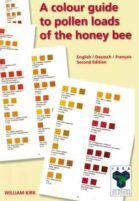
click image to zoom
Includes an explanation of the colour charts in English / Deutsch / Française This pollen book is a unique resource with worldwide demand. Beekeepers everywhere are fascinated by the sources of pollen brought back to the hive by their bees. Being able to identify the plants producing this pollen is the key to unlocking important information about bee forage in…
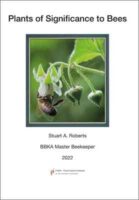
click image to zoom
This book was written as reference material to aid in the study of the National Diploma in Beekeeping (NDB). This is why the backbone of the book is the NDB plant list. However, for the NDB there is an expectation that the candidate will demonstrate knowledge beyond that of the plant list. So there are additional plant families and individual…
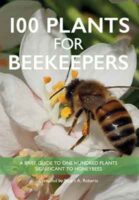
click image to zoom
Stuart Roberts is a Master Beekeeper, a member of the BBKA Examinations Board and a Trustee of the International Bee Research Association. The volume is a brief guide to one hundred plants significant to honeybees. Photographs are taken by the author during his work with apiaries in the Midland Counties. Each plant is described under the headings: Plant family; Common…
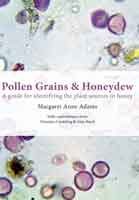
click image to zoom
This book describes, in detail, a simple approach for beekeepers, to identify the plant sources of their own honey. They will occasionally find they have a special honey, and then the jars can be labelled accordingly. From 2019 to 2021, beekeepers from The UK and Continental Europe sent me samples of their honey, and the collection of digital photos from…
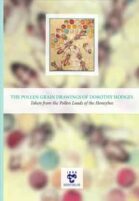
click image to zoom
The Pollen Loads of the Honeybee by Dorothy Hodges, an artist and experienced beekeeper, was first published 1952. It included drawings of pollen grains which will never be surpassed. The originals are preserved at the Royal Botanic Gardens, Kew. This booklet reproduces these drawings.
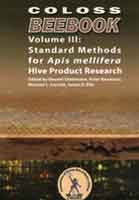
click image to zoom
Standard methods for Apis mellifera product research contains papers on royal jelly, beeswax, propolis and brood as human food, honey, venom and pollen. These seven papers have been written by 125 authors from 23 countries. Like the previous volumes, papers in Volume Ill are organized according to research topics. The authors have compiled the most relevant methods for both laboratory…
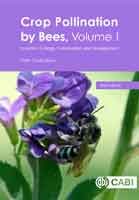
click image to zoom
Since the second half of the 20th Century, our agricultural bee pollinators have faced mounting threats from ecological disturbance and pan-global movement of pathogens and parasites. At the same time, the area of pollinator-dependent crops is increasing globally with no end in sight. Never before has so much been asked of our finite pool of bee pollinators. This book not…
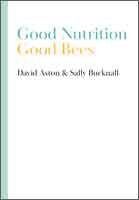
click image to zoom
The importance of pollinator species to man’s survival and the functioning of the world’s ecosystems is recognised. Environmental and other stressors have taken their toll on many pollinator species and their abundance. The European Honey bee (Apis mellifera) and man have had a long mutually beneficial relationship and it is vital that this continues. Like all organisms, honey bees need…
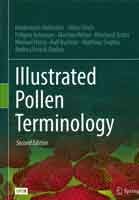
click image to zoom
This book offers a fully illustrated compendium of glossary terms and basic principles in the field of palynology, making it an indispensable tool for all palynologists. It is a revised and extended edition of "Pollen Terminology. An illustrated handbook,’” published in 2009. This second edition, titled "Illustrated Pollen Terminology" shares additional insights into new and stunning aspects of palynology. In…
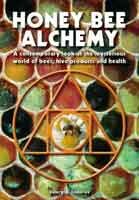
click image to zoom
This is the first English edition of an important book on "Honey bee alchemy" by a Polish researcher. An entirely original, unparalleled work dedicated to the mysterious aspects of the life of bees, the magical properties of the products they produce, and the chemical composition associated with their medicinal properties. This book will be of great interest to beekeepers where…
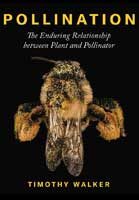
click image to zoom
An enticing illustrated look at pollination, one of the most astonishing marvels of the natural world. Pollination is essential to the survival of most plants on Earth. Some plants rely on the wind to transport pollen from one flower to another. Others employ an array of ingenious strategies to attract and exploit pollinators, whether they be insects, birds, or mammals.…
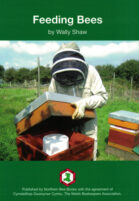
click image to zoom
Honey bees collect two types of food material; nectar and pollen. With the collection of nectar there is no evidence that there is any selection based on its nutrient value, other than as a source of energy (their dietary carbohydrate). Pollen is their source of protein and lipids (fats). By contrast, foraging for this vital material is much more complex…
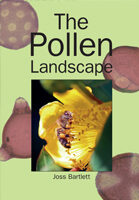
click image to zoom
Honey bees carrying pollen are a familiar sight to anyone who has watched them collecting it from flowers or bringing it back to a hive. But which kinds of pollen do they use, how do they find it, and what do they use it for? Environmental pressures on all pollinating insects, including honey bees, mean that questions like these have…
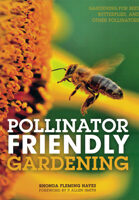
click image to zoom
Want to do your part in helping your local pollinators flourish? Pollinator Friendly Gardening makes it easy. Are you interested in growing a naturally healthy garden? How about making sure your local environment helps bees, butterflies, and birds survive and thrive? If you are a beekeeper, are you looking for the ideal plants to keep your colony happy? Pollinators such…
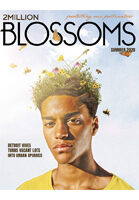
click image to zoom
1 Years Subscription – Print Edition, 4 Issues mailed to your door. Current issue No.3 Summer 2020. Northern Bee Books has been appointed the UK agents for this new American 100 page quarterly magazine. The magazine deals with all aspects of pollination and pollinators, of vital interest to this world. Subscribe today and learn more about our diverse pollinators and…
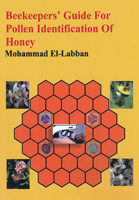
click image to zoom
This is a practical book written in a simple manner to make it understandable for beekeepers while still maintaining the principles and rules of pollen identification in honey. It also contains valuable information for expert melissopalynologists. It is designed after an intensive work in field observation of bee foraging, preparation & photographing pollen of the observed flora, searching in hundreds…
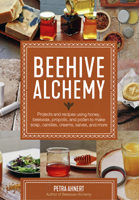
click image to zoom
From crayons to cough drops, cookies to candles, Beehive Alchemy is a comprehensive introduction to incorporating the miracle of bees into everyday life. With this new book, beekeepers (and bee lovers) will learn about the benefits and attributes of beeswax, honey, propolis, and more as they're introduced to a full range of projects and techniques to process and harness the…
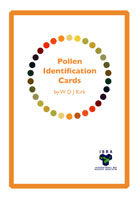
click image to zoom
These cards show the colours of pollen loads collected by honey bees. Each month depicts the colours for the plants that are most frequently visited by honey bees. On the reverse of each card is information about the typical flowering duration of each species. Some plants have also been identified as major sources of nectar.
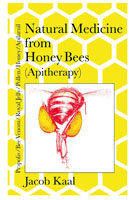
click image to zoom
This much awaited reprint of a classic Apitherapy title is once more available. The practical perspective taken and the pioneering research underpinning this volume make it a very valuable source of information for beekeepers, medical practitioners, pharmacists and patients seeking alternative medicine, even after twenty years since first publication. But then again, what are two decades in the light of…
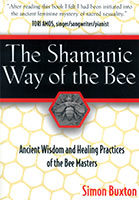
click image to zoom
Bee shamanism may well be the most ancient and enigmatic branch of shamanism. It exists throughout the world - wherever, in fact, the honeybee exists. Its medicinal tools - such as honey, pollen, propolis and royal jelly - are now in common usage and even the origins of Chinese acupuncture can be traced back to the ancient practice of applying…
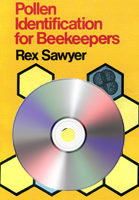
click image to zoom
Rex Sawyer, an authority on pollen has written a most useful manual for those lucky enough to possess a microscope. Awarded a Bronze Medal at the Apimondia 1983 Budapest Conference. This includes the CD - an illustrated key to accompany Rex Sawyer’s book.
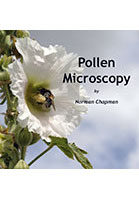
click image to zoom
Pollen is fascinating material for anyone interested in looking down a microscope, or discovering where their bees have been foraging. The variety of sizes and shapes gives clues as to the ingenious ways plants utilise the weather and insect behaviour to deliver pollen to its intended destination. This second edition of the book shares techniques on successful microscopy accompanied by…
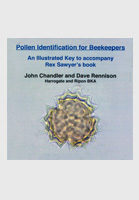
click image to zoom
CD by John Chandler and Dave Rennison (Harrogate and Ripon BKA): An illustrated Key to accompany Rex Sawyer's book. This item is the CD An Illustrated Key (Chandler & Rennison) only.
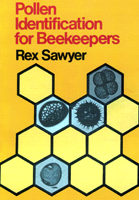
click image to zoom
Rex Sawyer, an authority on pollen has written a most useful manual for those lucky enough to possess a microscope. Awarded a Bronze Medal at the Apimondia 1983 Budapest Conference.


